Last updated on December 5, 2022
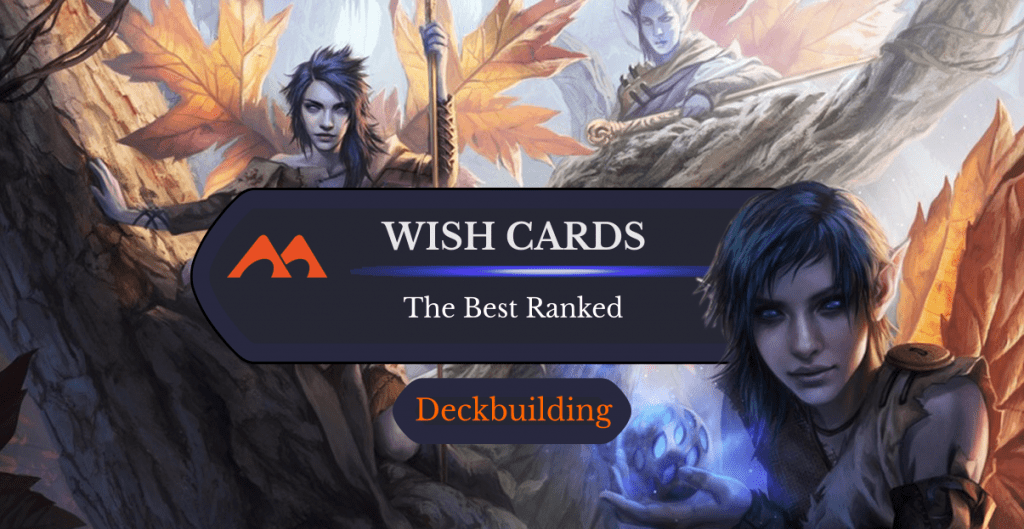
Fae of Wishes | Illustration by Magali Villeneuve
I love toolboxes in Magic. One of my favorite things about the game is having the ability to search for answers to any given situation, be it to find the perfect answer to my opponents’ resilient threat or thread the needle and combo off on the last possible turn. We’ve already covered the best tutors for any situation, so today I’m here to give you the rundown on their cousins, the wishes.
Wishes are a rare breed of card that let you interact with zones that aren’t traditionally used in the game. They’re a powerful way to include cards that you otherwise don’t want to draw or only need in very narrow circumstances, giving access to answers that you’d normally only have in games after sideboarding. They add a new dimension to deckbuilding that adds a whole ‘nother level of nuance.
Today I’m going to go into each and every wish to tell you everything you could ever wish to know about wishes. Let’s get started!
What are Wishes in MTG?
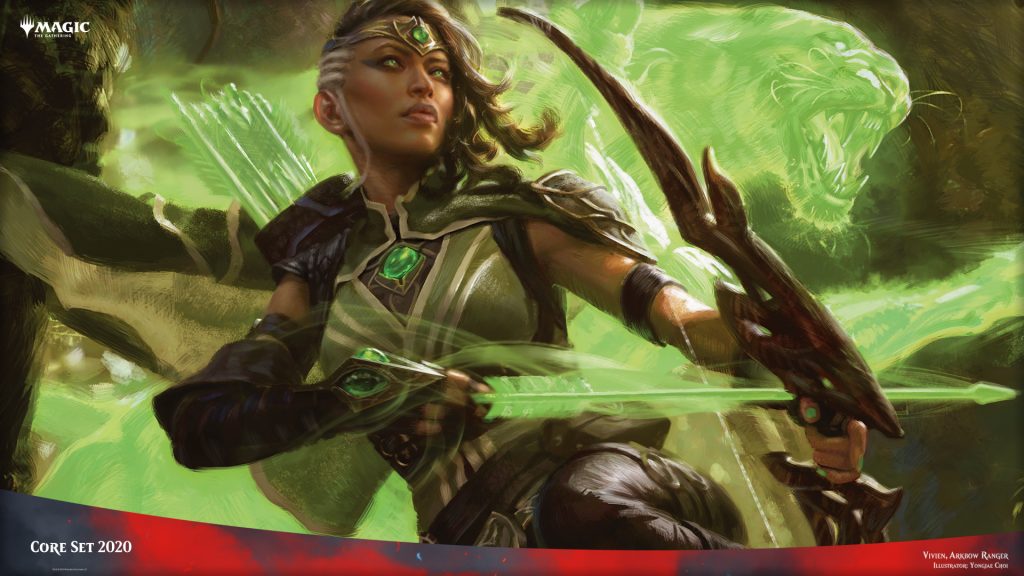
Vivien, Arkbow Ranger | Illustration by Yongjae Choi
The term “wish” is used to describe a card that can introduce another card from outside the game. This originates from the first cards that used the mechanic, the “wish” cycle from Judgment.
Though they only appear rarely, wishes show up in every color. But what exactly those wishes can find is often subject to certain restrictions.
White Wishes
Golden Wish

Rating: 3/10
The white representative from the OG wish cycle, Golden Wish is perhaps the one that’s seen the least play. Costing at least two mana more than the rest of the cycle will do that, which was almost certainly warranted given that it was play tested for older formats where it could potentially get some of the more egregiously powerful artifacts of that era.
Legion Angel
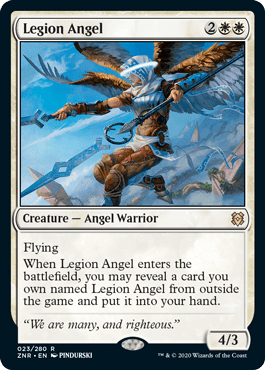
Rating: 1/10
Technically Legion Angel isn’t really a wish card. One of the hallmarks of wishes is that they offer you flexibility, and this card can only get you another copy of itself. The reason I’m including it anyway is because it offers similar deckbuilding considerations to those that wishes do, where you determine the mainboard vs. sideboard split.
Blue Wishes
Cunning Wish
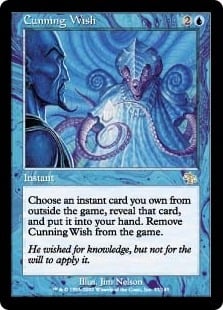
Rating: 8/10
Cunning Wish is a card that’s seen no shortage of play in large formats as a centerpiece for interactive blue combo decks. It was often used in conjunction with Psychatog during the Odyssey block to find the perfect interaction to allow a critically large Psychatog attack for lethal.
It continues to be an accessory to combo pieces in bigger formats, finding Firemind's Foresight, Intuition, or even something like Sublime Epiphany.
Coax from the Blind Eternities

Rating: 5/10
Now this is a card design that I love. Coax from the Blind Eternities is a card that hasn’t seen much play but embodies everything that’s good about wishes. For an extra three mana you can choose whether or not you find Emrakul, the Aeons Torn or Eldrazi Mimic.
Fae of Wishes

Rating: 7/10
Fae of Wishes is one of many powerhouses from Throne of Eldraine, pushing the envelope as a repeatable wish, even at a steep cost. While it didn’t make very many splashes in Standard it’s flexed its muscles in Pioneer where it’s a key piece of many Lotus Field Combo decks since it’s able to find Peer into the Abyss, Approach of the Second Sun, and Ugin, the Spirit Dragon.
Black Wishes
Death Wish

Rating: 4/10
Death Wish has one of the original black mechanics of being able to largely do whatever you want as long as you pay enough life. The biggest mark against this card is the fact that most decks that want that effect can look to other cards like Grim Tutor, Diabolic Intent, and Infernal Tutor.
Mastermind's Acquisition
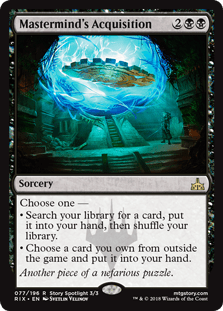
Rating: 5/10
Mastermind's Acquisition lets you search both your mainboard and your sideboard. Diabolic Tutor is the baseline for a fair cost for a tutor effect and this is a notable upgrade. A slick design that occasionally finds its way into combo decks.
Red Wishes
Burning Wish

Rating: 10/10
Burning Wish is perhaps the strongest and most broadly played of the entire wish family. It’s put up results in Legacy for over a decade now where it combines with Lion's Eye Diamond to cast a game ending Peer into the Abyss or Tendrils of Agony.
Wish
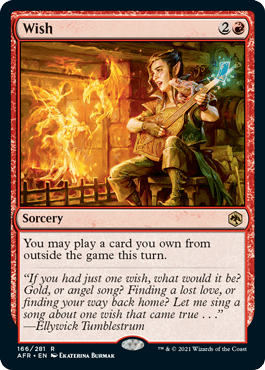
Rating: 8/10
Wish is a truly beautiful card design. A twist on the original, combining the red exile-draw mechanic with the wish presents a very interesting but not too busted effect for newer formats. That combined with the simplicity of the name makes this a perfect card design. It remains to be seen if it can find a home in competitive Magic.
Green Wishes
Living Wish
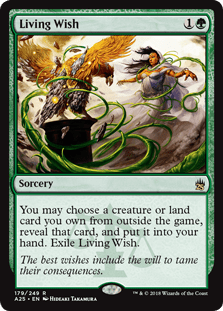
Rating: 9/10
While Cunning Wish traditionally found interaction for fast spell-based combo decks and Burning Wish found engine pieces for fast spell-based combo decks, Living Wish is a lot more versatile in its applications. It’s found use finding creatures for intensive Aluren and Survival of the Fittest combos and can also find lands for Dark Depths combos, and decks have used it as a toolbox for silver bullets against other combo decks.
Vivien, Arkbow Ranger
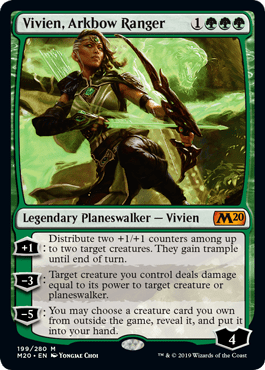
Rating: 7/10
One of two planeswalkers that allow you to wish for something, Vivien, Arkbow Ranger has shown up a fair bit in Pioneer Mono Green Devotion lists where it can fetch you interactive pieces when your very linear game plan needs a bit of help.
Grizzled Huntmaster
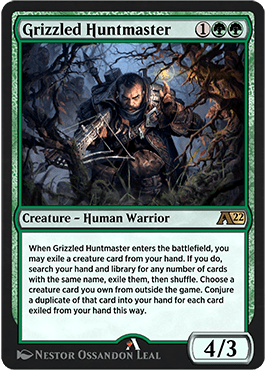
Rating: 4/10
A card that has a famously complicated textbox, Grizzled Huntmaster lets you transmute a creature card from your hand into another one. Combining the ability to search for silver bullets with a very efficient stat line makes this a formidable threat.
Multicolor Wishes
Research // Development
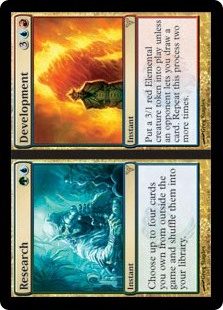
Rating: 2/10
Another interesting take on the genre, Research // Development is an incredibly slow wish effect despite its cheap cost. There’s a number of sweet things you could combine this with including a number of efficient search engines like Birthing Pod or Fiend Artisan. But this begs the question as to why you were casting Research in the first place when you could already have the cards you were looking for in your deck.
Glittering Wish
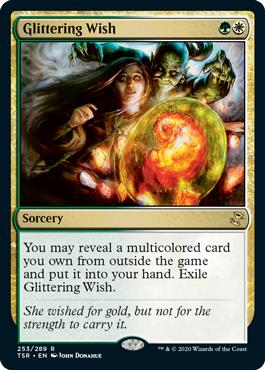
Rating: 6/10
The closest relative to the original Judgment wish cycle hasn’t seen too much play, but it had its moment in the sun during the high-water mark of Jeskai Ascendancy as another way to find the eponymous engine card. Glittering Wish’s low cost makes it interesting, but the restrictions on what it can find are constrained enough that most combo decks look for smoother ways to assemble their pieces.
The Raven's Warning
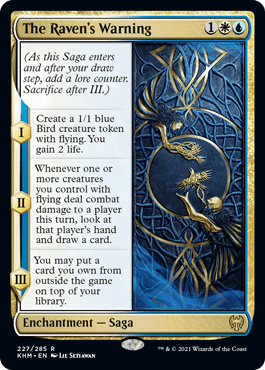
Rating: 3/10
The last wish I have to show you is a slow one indeed. As a saga it takes two more turns for you to actually get to wish and then The Raven's Warning puts the card you find on top of your library. This card has a lot of things going on and does a lot, but none of them particularly well. While very interesting in its Limited format, this card has yet to find the right shell in any Constructed format.
Colorless Wishes
Ring of Ma'Rûf
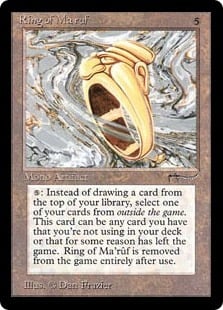
Rating: 2/10
The original card that let you go beyond your 60- (or 40-, or 100-) card deck to find answers. Ring of Ma'Rûf is a hallmark of ancient artifact design where it’s either grossly undercosted (read: the Power 9) or ridiculously overcosted as seen here.
Spawnsire of Ulamog
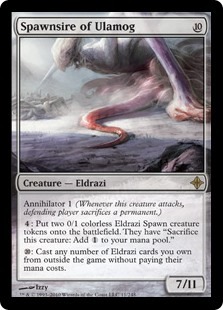
Rating: 5/10
For the low, low cost of 20 mana you can plop any number of Eldrazi in play. The highest cost of any activated ability is the dream of every casual player where you can just take your binder full of Eldrazi titans or your bucket of Hand of Emrakuls and Ulamog's Crushers and plop them onto the table.
Of course Spawnsire of Ulamog has a more real upper limitation in Constructed formats where you’re limited by the number of cards in your sideboard, but either way pressing the big shiny button with a “20” on it should win you the game on the spot.
Karn, the Great Creator
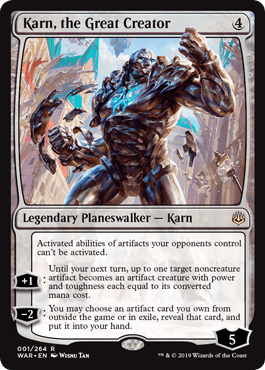
Rating: 9/10
Karn, the Great Creator is a card that’s made splashes in pretty much every format it’s in. Karn is restricted in Vintage, caused the ban of Mycosynth Lattice in Modern, and has a strong presence in both Legacy and Pioneer where its passive ability acts as a lock piece and its ability to wish finds hate pieces like Damping Sphere and Pithing Needle or combo pieces like Lion's Eye Diamond and Bolas's Citadel.
The low cost of the ability makes it very reasonable to use multiple times, such that Karn is a one-card engine. This makes it toe the line between “very strong” and “ban-worthy.”
Best Wish Payoffs
Legacy
- Cunning Wish: Veil of Summer, Intuition, Sublime Epiphany, High Tide, and Pact of Negation.
- Burning Wish: Tendrils of Agony, Peer into the Abyss, , Echo of Eons, Empty the Warrens, Massacre, and Galvanic Relay.
- Living Wish: Dark Depths, Vampire Hexmage, Sylvan Safekeeper, Karakas, Acererak the Archlich.
- Karn, the Great Creator: Lion's Eye Diamond, Painter's Servant, Grindstone, and Mycosynth Lattice.
Modern
- Karn, the Great Creator: Chalice of the Void, Walking Ballista, Ensnaring Bridge, and Liquimetal Coating.
Pioneer
- Fae of Wishes: Peer into the Abyss, Approach of the Second Sun, Ugin, the Spirit Dragon, and Supreme Verdict.
- Karn, the Great Creator: Tormod's Crypt, Pithing Needle, Witch's Oven, Damping Sphere, and Bolas's Citadel.
- Vivien, Arkbow Ranger: Outland Liberator, Scavenging Ooze, Shifting Ceratops, Kogla, the Titan Ape, and Ulamog, the Ceaseless Hunger
What Does it Mean to Play a Card from Outside the Game?
Playing a card from outside the game has several connotations. For casual games this means pretty much any card you own that isn’t currently part of the game. If you want to pull a card out of your binder or ask a friend to borrow their bomb rare for a couple minutes, playing a wish effect would let you use those cards.
As far as playing in tournament scenarios, this means that you can only take cards from your sideboard. This can also include cards that you boarded out from your mainboard in a previous game.
Does Wish Work on Exiled Cards?

Interestingly enough the exile zone is recognized as part of the game itself, so cards that are exiled are still part of the game and can’t be searched for with wish effects. You can see this example in action with Karn, the Great Creator, which differentiates between “outside the game” and “exiled.”
Is Wish Legal or Banned in MTG?
Wish effects are by definition legal in most Constructed Magic formats except for Commander where you’re only allowed 100 cards with no sideboard. For this reason cards that feature the wish mechanic are generally aimed at the competitive crowd rather than more casual players.
How Do Wishes Work in MTG Arena?
Wishes work in MTG Arena just like they do in paper Magic for the most part.
In BO3 formats wishes work as normal, where you can search your sideboard for the cards that your wish allows you to find. But in BO1 formats you’re only allowed to consult a 7-card sideboard for this purpose. It’s important to note that you still need to build a sideboard despite only playing one game for this exact purpose!
Wrap Up

Wish | Illustration by Ekaterina Burmak
Wishes exist throughout Magic’s color spectrum, and what each one can find varies tremendously from card to card. They’re a unique design that asks some very compelling deckbuilding questions. Opening up new avenues to interact promotes dynamic gameplay, which makes me a big fan of wish effects in Constructed magic.
Of course, wishes bring similar concerns that tutors do to Constructed formats: repetitive gameplay and high consistency can lead to very unpleasant formats. Both Karn, the Great Creator and Burning Wish have played a part in decks that have gotten other cards banned. Such is the nature of these powerful effects! Still, I’ve enjoyed both playing and playing against these cards, and I especially appreciate tweaking the exact perfect sideboard for my brews.
If you enjoyed my ranking of wishes let me know in the comments down below or over on the official Draftsim Discord. Sadly I didn’t play during the era when Cunning Wish and friends wrought havoc in old Extended, but if you did, let me know about the sweet decks that existed during that time.
That’s all from me for now. Stay safe, stay healthy, and wash your hands!
Follow Draftsim for awesome articles and set updates:
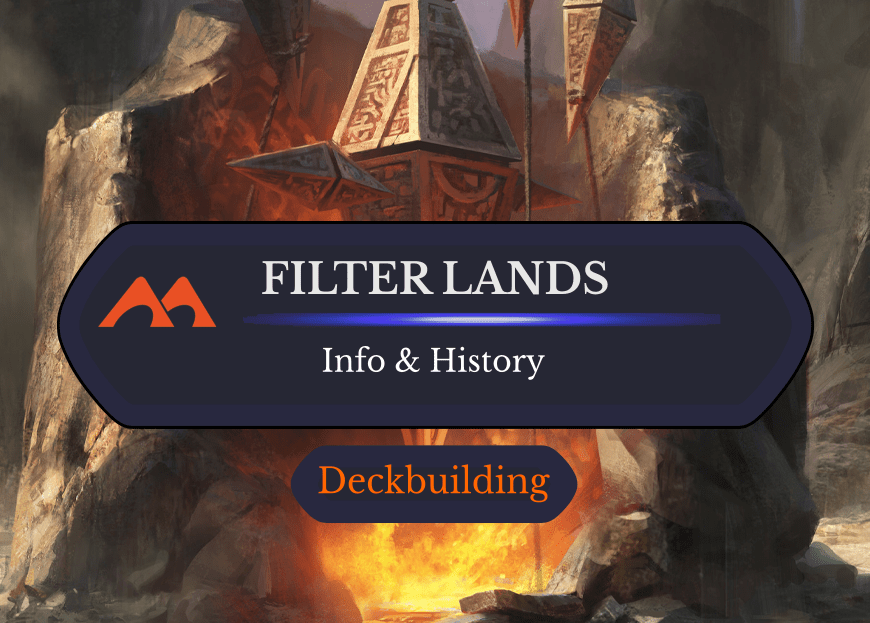
Add Comment